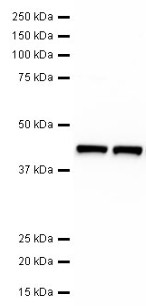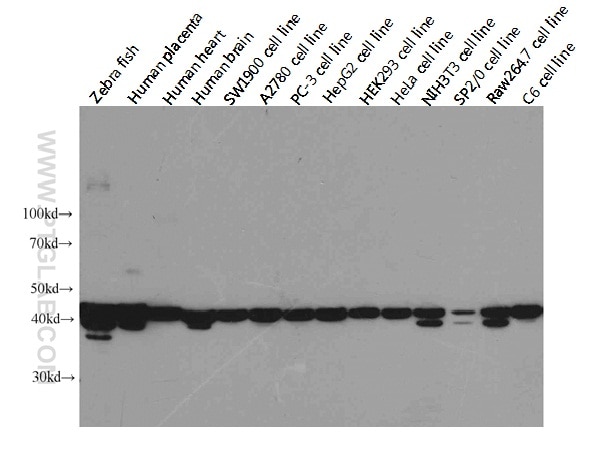

Beta-Actin Western Blotīeta-actin, is usually used as a loading control for Western Blot to normalize the levels of protein detected byĬonfirming that protein loading is the same across the gel.

Beta-actinĪ major constituent of the contractile apparatus. These amino acid differences confer different biochemical properties between the two isoforms. In striated and smooth muscle cells, whereas beta-actin and gamma-actin isoforms are ubiquitously expressed.Ĭonserved from birds to mammals, beta-actin and gamma-actin differ at only four biochemically similar amino acid Actins are highly conserved proteins that are involved in cell motility, structure, and integrity.Īre six different but highly conserved actin isoforms in vertebrates.
-Western-Blot-NB600-501-img0023.jpg)
Protein detected by confirming that protein loading is the same across the gel. They can be used to normalize the levels of * In reality, some scientists are becoming more and more aware that many experiments actually do affect a number of "housekeeping" genes, but when most see variations by, for example, Western blot or qPCR, they often choose a different loading control to use.Beta-actin Loading Control Beta-Actin Proteinīeta-actin, also known as a "housekeeping" protein, is usually used as a loadingĬontrol, for among others, the integrity of cells, protein degradation, in PCR and Western blotting.Ĭontrols are essential for proper interpretation of western blots. These include Bradford, Lowry, and BCA type assays, which may or may not be detergent compatible, staining the membrane after transfer with dyes such as Ponceau S, SYPRO Ruby, or India ink, or staining the gel with Coomassie or other proprietary Western-compatible stains. In either case, you want your loading control to be a different size than your original targets.įinally, all of this is assuming that the researcher has already attempted to load equal amounts of total protein per lane by using any one of a variety of methods for quantitating protein concentration. The choice of loading control can also be influenced by the size(s) of the protein(s) you are analyzing, as investigators frequently either strip Western blots and reprobe them with the loading control, or run two different species and detect with different colored secondary antibodies when performing fluorescent Westerns. In other cases, you may be examining fractionated lysates (a membrane preparation, just the nuclei, mitochondria, only the soluble fraction, etc.) and so may choose Na/K ATPase, Histone H3, COX IV, or GAPDH, respectively. There are many different loading controls to choose from, and some may be dictated by the cell/tissue type you are examining - for example, when working with stem cells, you may want to show that your experimental conditions didn't induce differentiation in the cells, so a pluripotency marker like Oct-4A or Sox2 may be chosen.

This is absolutely essential in some experimental systems where it may not be possible to always collect the exact same number of cells for each sample, such as when working with primary cells, tissue samples, or systems where you may be altering protein synthesis, cell size/number, or apoptosis. In Western blotting, they are run as a "loading control" to show that very similar amounts of protein were loaded in each lane. Their proteins typically perform functions that are required across essentially all cell types (for example, β-actin is part of the cytoskeleton's microfilaments), and are supposed * to be not affected by experimental conditions. Β-actin belongs to a class of genes called housekeeping genes.


 0 kommentar(er)
0 kommentar(er)
